Angkor Tours
All of tours are private, custom-tailored trips. Below is a simple itinerary, although our custom trips typically differ. Please click here to request more information on a private tour.
Example Three-day Angkor Tour
Day 1 | Arrive Siem Reap
After arrival in Siem Reap airport, meet escort upon exiting plane for expedited immigration and transfer to your resort. Over refreshments, enjoy an orientation and overview of Siem Reap, our base for exploring the nearby temples of Angkor and then guided tour of the world-class Angkor National Museum which provides the perfect introduction to the temples.
For lunch, dining on local cuisine in the traditional Khmer home of the former director of the Apsara Authority, the organization that manages the entire Angkor temple complex. After learning about the temples, begin exploration of the temples complex, visiting Angkor Thom and the famous gigantic stone faces of the Bayon.
Tonight, a delightful traditional dinner with traditional dance performance provided at the resort. Afterwards, strolling in downtown in the cooler night air, exploring the central market, galleries and shops. Note: No visa in advance required for Cambodia, visa issued upon arrival with formalities handled by your escort.
Tonight, dinner accompanied by a traditional Khmer dance performance.
Siem Reap is always warm and sunny year round with little rain expected outside the monsoon season (late July through mid- to late-September).
Day 2 | Angkor
At dawn, exploring Ta Prohm at sunrise. Dedicated by king Jayavarman VII largely to his mother, but also other family members, Ta Prohm ("ancestor Brahma") has been abandoned to the elements, a reminder that while empires rise and fall, the riotous power of nature marches on, oblivious to the dramas of human history. Left much as it was found by French explorer Henri Mouhout in 1860, the tentacle-like silk cotton and fig tree roots here are slowly strangling the surviving stones of the ancient monastery and university, creating a surrealistic juxtaposition (especially in the morning light), a perfect time for photography and to marvel at the special setting of the ancient monastic complex (one of the largest sites in Angkor) before the tour buses arrive.
After soaking up the unique atmosphere of Ta Prohm, exploring nearby Ta Keo ("tower of crystal"), one of the great "temple-mountains" of Angkor. Like Pre Rup, Ta Keo has five sanctuary towers arranged in a quincunx, built on the uppermost level of five-tier pyramid consisting of overlapping terraces (a step pyramid), surrounded by moat, as a symbolic depiction of Mount Meru. The walls of Ta Keo are plain, as the temple was abandoned just as carvings were started on its large sandstone blocks (one theory posits it was stopped after lightening had struck it). This simplicity separates Ta Keo from all other Angkor temples.
Following Ta Keo, visiting Chau Sey Devada and its sister temple, Thommanon, a pair of symmetrical Hindu shrines strategically located outside Angkor Thom's east gate. Thammanon was restored extensively and the small and elegant temple is worth a short visit for its lovely carved figurines.
Following return to Siem Reap for lunch and refreshing dip in the pool, traveling north to visit the temple of Banteay Srei (25 kilometers outside Angkor). This petite pink temple is known as "the jewel of Khmer art" for its fine Angkor-era sculpture. The elaborate carvings here are the finest found in Cambodia and the name translates as "Fortress or citadel of the Women," thanks to the intricate detail here, which Khmer’s consider too fine to have been crafted by hands of men.
Originally believed to date from the latter part of the Angkor period, inscriptions at the site suggest it was built by a Brahman in 967. However, some architectural historians have suggested that the inscriptions may date from an earlier structure on this site. It's interesting to note this early temple (consecrated on the 22nd of April, 967 A.D.), Banteay Srei was the only major temple at Angkor not built by a monarch, it's construction is credited to a courtier named Yajnavaraha.
Following Banteay Srei, if not visited on the previous day, pause at the well-preserved Banteay Samre constructed around the same time as Angkor Wat and whose style of towers and balustrades bear strong resemblance to Angkor. The carvings here are in excellent condition.
On the return to the temples, visiting the unique Landmine Museum, a non-profit education project seeking to spread information about the country's long, terrible history with landmines. The museum was founded by ex Khmer Rouge child-soldier Aki Ra as a way to tell the world about the horrors landmines had inflicted on his native Cambodia, offering tourists and Cambodians the chance to see (safe) landmines up close, understand how they work, and what they can do to help rid Cambodia and the world of their continuing threat.
The day's sightseeing concludes with a dramatic panorama view at sunset from the summit of Pre Rup (less crowded than the popular Phnom Bakheng), overlooking area. Dinner in town.
In the evening, restaurant recommendations include Viroth's, serving up traditional Khmer cuisine, Abacus (with owner Renaud on hand to discuss wine), and Cuisine Wat Damnak (with wine pairings from Johannes Rivieres).
Day 3 | Angkor
At dawn, exploring the grandest of all Asian temples, Angkor Wat with a professor of archeology from the University of Sydney and expert on the temples of Angkor. Built in the 12th century by King Suryavarman II, Angkor Wat marks the climax of Khmer architecture. It is believed to be the world's largest religious building and a perfect fusion of symbolism and symmetry and is a source of pride and strength to all Khmer people. At the center, Angkor Wat was the centerpiece of what is now thought to have been the largest pre industrial city in the world (Angkor is a Khmer term meaning "city"), with an elaborate system of infrastructure connecting an urban sprawl of at least 1,000 square kilometers.
Helicopter Tour AngkorAfter consolidating his political position through military campaigns, diplomacy, and a firm domestic administration, King Suryavarman launched into the construction of Angkor Wat as his personal temple mausoleum. With walls nearly one-half mile long on each side, Angkor Wat grandly portrays the Hindu cosmology, with the central towers representing Mount Meru, home of the gods; the outer walls, the mountains enclosing the world; and the moat, the oceans beyond. Suryavarman had the walls of the temple decorated with bas reliefs depicting not only scenes from mythology, but also from the life of his own imperial court. In one of the scenes, the king himself is portrayed as larger in size than his subjects, sitting cross-legged on an elevated throne and holding court, while a bevy of attendants make him comfortable with the aid of parasols and fans.
After exploration of Angkor by foot, enjoying a bird's eye view of the central temples area with a thirty-minute flyover by private helicopter. Upon landing, proceed to the immense and sprawling Preah Khan ("sacred sword"), built on the site of king Jayavarman VII's victory over the invading Chams in 1191 and served as a monastery that used to house over a thousand monks during the Khmer empire. The extensive passage, galleries, and extensive carvings are a breathtaking sight. For a brief period Preah Khan also served as the residence of King Jayavarman VII (during the reconstruction of his permanent home in the walled city of Angkor Thom) and the king dedicated Preah Khan to his father. Notable here are the Buddha images which were vandalized in the later rise of Hinduism the columns on the building west of the main temple, a rare example of round columns and may be from a later period. Preah Khan has been left largely unrestored, with numerous trees and other vegetation growing among the ruins creating a surreal milieu of root and stone.
After, visiting Neak Pean ("coiled or entwined serpent"), one of Angkor's most unique temples. Neak Pean is a smaller temple located on an island in the middle of a several pools or ponds, within a larger but now dry baray (lake). Neak Pean was originally designed for curative purposes, one of the many hospitals that Jayavarman VII built. It is based on the ancient Hindu belief of balance with the four connected pools represent Water, Earth, Fire and Wind. Khmers believed that going into these pools would balance the elements in the bather, thus curing disease.
Following return to Siem Reap for lunch and refreshing dip in the pool, traveling north to visit the temple of Banteay Srei (25 kilometers outside Angkor). This petite pink temple is known as "the jewel of Khmer art" for its fine Angkor-era sculpture. The elaborate carvings here are the finest found in Cambodia and the name translates as "Fortress or citadel of the Women," thanks to the intricate detail here, which Khmer’s consider too fine to have been crafted by hands of men.
Originally believed to date from the latter part of the Angkor period, inscriptions at the site suggest it was built by a Brahman in 967. However, some architectural historians have suggested that the inscriptions may date from an earlier structure on this site. It's interesting to note this early temple (consecrated on the 22nd of April, 967 A.D.), Banteay Srei was the only major temple at Angkor not built by a monarch, it's construction is credited to a courtier named Yajnavaraha.
Following, visit Banteay Srei (if not visited on the previous day).
The day's sightseeing concludes with a dramatic panorama view at sunset from the summit of Pre Rup (less crowded than the popular Phnom Bakheng), overlooking area. Dinner in town, further exploring Khmer culinary delights. (B)


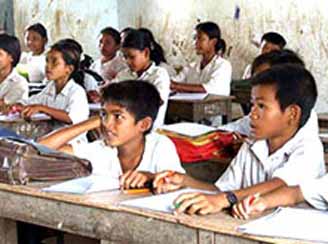
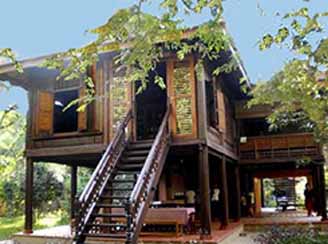
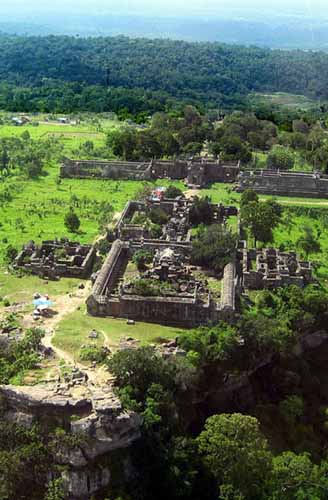



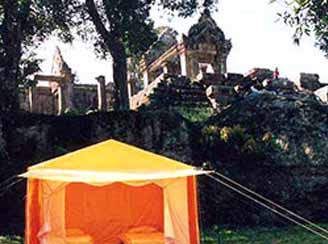
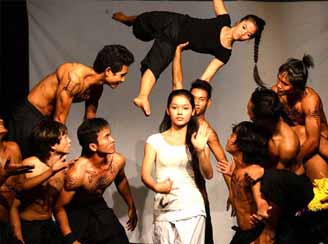
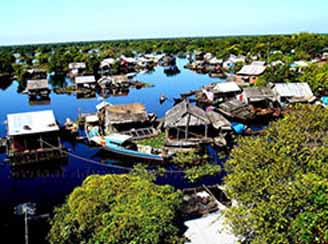
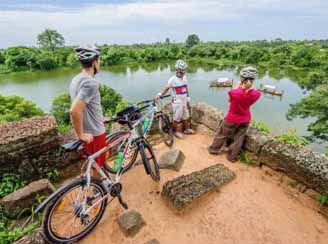












 After arrival in Siem Reap airport, meet escort upon exiting plane for expedited immigration and transfer to your resort. Over refreshments, enjoy an orientation and overview of Siem Reap, our base for exploring the nearby temples of Angkor and then guided tour of the world-class Angkor National Museum which provides the perfect introduction to the temples.
After arrival in Siem Reap airport, meet escort upon exiting plane for expedited immigration and transfer to your resort. Over refreshments, enjoy an orientation and overview of Siem Reap, our base for exploring the nearby temples of Angkor and then guided tour of the world-class Angkor National Museum which provides the perfect introduction to the temples. At dawn, exploring Ta Prohm at sunrise. Dedicated by king Jayavarman VII largely to his mother, but also other family members, Ta Prohm ("ancestor Brahma") has been abandoned to the elements, a reminder that while empires rise and fall, the riotous power of nature marches on, oblivious to the dramas of human history. Left much as it was found by French explorer Henri Mouhout in 1860, the tentacle-like silk cotton and fig tree roots here are slowly strangling the surviving stones of the ancient monastery and university, creating a surrealistic juxtaposition (especially in the morning light), a perfect time for photography and to marvel at the special setting of the ancient monastic complex (one of the largest sites in Angkor) before the tour buses arrive.
At dawn, exploring Ta Prohm at sunrise. Dedicated by king Jayavarman VII largely to his mother, but also other family members, Ta Prohm ("ancestor Brahma") has been abandoned to the elements, a reminder that while empires rise and fall, the riotous power of nature marches on, oblivious to the dramas of human history. Left much as it was found by French explorer Henri Mouhout in 1860, the tentacle-like silk cotton and fig tree roots here are slowly strangling the surviving stones of the ancient monastery and university, creating a surrealistic juxtaposition (especially in the morning light), a perfect time for photography and to marvel at the special setting of the ancient monastic complex (one of the largest sites in Angkor) before the tour buses arrive. Originally believed to date from the latter part of the Angkor period, inscriptions at the site suggest it was built by a Brahman in 967. However, some architectural historians have suggested that the inscriptions may date from an earlier structure on this site. It's interesting to note this early temple (consecrated on the 22nd of April, 967 A.D.), Banteay Srei was the only major temple at Angkor not built by a monarch, it's construction is credited to a courtier named Yajnavaraha.
Originally believed to date from the latter part of the Angkor period, inscriptions at the site suggest it was built by a Brahman in 967. However, some architectural historians have suggested that the inscriptions may date from an earlier structure on this site. It's interesting to note this early temple (consecrated on the 22nd of April, 967 A.D.), Banteay Srei was the only major temple at Angkor not built by a monarch, it's construction is credited to a courtier named Yajnavaraha. At dawn, exploring the grandest of all Asian temples, Angkor Wat with a professor of archeology from the University of Sydney and expert on the temples of Angkor. Built in the 12th century by King Suryavarman II, Angkor Wat marks the climax of Khmer architecture. It is believed to be the world's largest religious building and a perfect fusion of symbolism and symmetry and is a source of pride and strength to all Khmer people. At the center, Angkor Wat was the centerpiece of what is now thought to have been the largest pre industrial city in the world (Angkor is a Khmer term meaning "city"), with an elaborate system of infrastructure connecting an urban sprawl of at least 1,000 square kilometers.
At dawn, exploring the grandest of all Asian temples, Angkor Wat with a professor of archeology from the University of Sydney and expert on the temples of Angkor. Built in the 12th century by King Suryavarman II, Angkor Wat marks the climax of Khmer architecture. It is believed to be the world's largest religious building and a perfect fusion of symbolism and symmetry and is a source of pride and strength to all Khmer people. At the center, Angkor Wat was the centerpiece of what is now thought to have been the largest pre industrial city in the world (Angkor is a Khmer term meaning "city"), with an elaborate system of infrastructure connecting an urban sprawl of at least 1,000 square kilometers. After exploration of Angkor by foot, enjoying a bird's eye view of the central temples area with a thirty-minute flyover by private helicopter. Upon landing, proceed to the immense and sprawling Preah Khan ("sacred sword"), built on the site of king Jayavarman VII's victory over the invading Chams in 1191 and served as a monastery that used to house over a thousand monks during the Khmer empire. The extensive passage, galleries, and extensive carvings are a breathtaking sight. For a brief period Preah Khan also served as the residence of King Jayavarman VII (during the reconstruction of his permanent home in the walled city of Angkor Thom) and the king dedicated Preah Khan to his father. Notable here are the Buddha images which were vandalized in the later rise of Hinduism the columns on the building west of the main temple, a rare example of round columns and may be from a later period. Preah Khan has been left largely unrestored, with numerous trees and other vegetation growing among the ruins creating a surreal milieu of root and stone.
After exploration of Angkor by foot, enjoying a bird's eye view of the central temples area with a thirty-minute flyover by private helicopter. Upon landing, proceed to the immense and sprawling Preah Khan ("sacred sword"), built on the site of king Jayavarman VII's victory over the invading Chams in 1191 and served as a monastery that used to house over a thousand monks during the Khmer empire. The extensive passage, galleries, and extensive carvings are a breathtaking sight. For a brief period Preah Khan also served as the residence of King Jayavarman VII (during the reconstruction of his permanent home in the walled city of Angkor Thom) and the king dedicated Preah Khan to his father. Notable here are the Buddha images which were vandalized in the later rise of Hinduism the columns on the building west of the main temple, a rare example of round columns and may be from a later period. Preah Khan has been left largely unrestored, with numerous trees and other vegetation growing among the ruins creating a surreal milieu of root and stone.